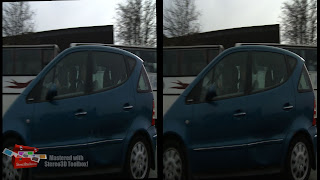

I know this is a 3d blog. BUT I have to earn a living while the production community in the North West catches up with the rest of the world! Being a totally unheard of commercials director (not based in London or the South East) is quite liberating in an odd way. You have nothing to prove, no 'reputation' to live up to...and you avoid some of the more incestuous aspects of the business. The other thing is that I am really lucky having a company like The Mob Film Co represent me, because they have world class features directors on their books and so it shows they really have a superb reputation. The top directors in the commercials game can pick and choose who they work for. Ergo, if I am on their books - they must rate my work, because frankly they could pick and choose and boot me off in a instant. The other plus is that I sometimes get to pitch for big national and global brands - like Florette - those lovely 'crispy Salad' people. Their Ads have always been towards the surreal and fun end of the scale and so I guess the agency saw a something in my mad reel that appealed to them! The creative was great fun, and the development process went smoothly. Pre-prod was tight for time, but we got there. The guys at the agency are hilarious - well, they did dream up the whole Crispy Salad idea, and the wonderful world of Florette!
We filmed in Cheshire in one of only four 'Cruck' barns left in the country, a curious 16th century, European looking barn, it was a cold winters morning yet with the lights on and the superb set design by Paul Kondrass it looked amazingly late summer / autumnal! The DoP was Steve Weiser, a master at painting with light, and the shoot went flawlessly. You can see the finished results on TV - the deliciously fruity fruit segments, fresh from Florette! Look out for mad dancing people in a barn chopping fruit with their hands in a fruity ritual...
Directed by yours truly, shot in Arley Hall in Cheshire, edited by Olly at Delicious Post on Wardour Street,
audio at Grand Central and on a screen near you soon! (throughout 2010...).
